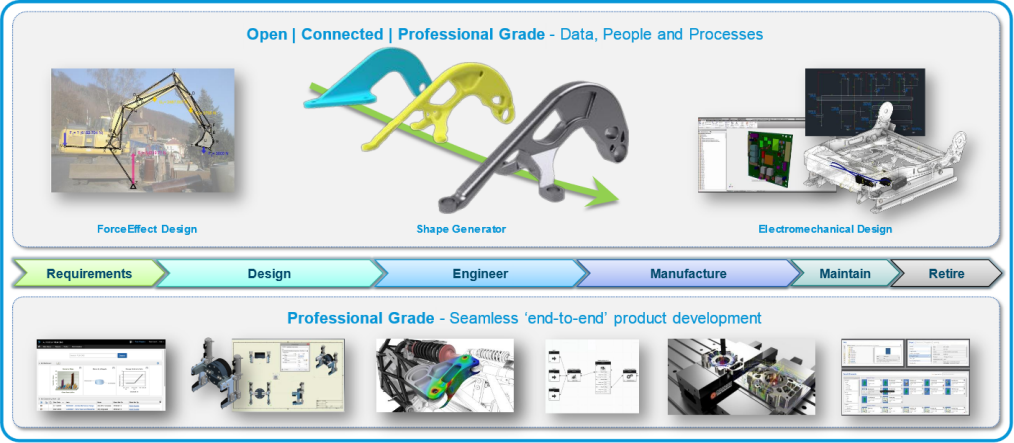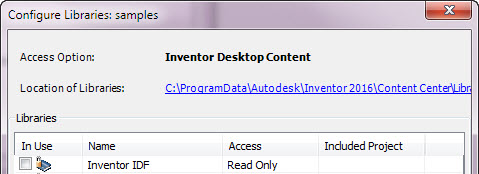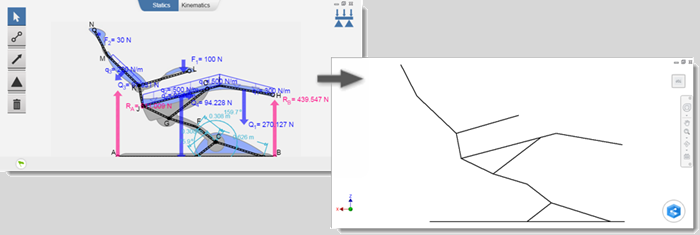Inventor is constantly evolving to help you solve current and future challenges in engineering and manufacturing. Inventor 2016 R2, an update available to Inventor subscribers, delivers core product enhancements and introduces new tools to improve your product performance through up-front simulation and concept lightweight part design, more efficient electrical and mechanical design data workflows, and more.
This release includes something never before available inside a CAD application: Shape Generator. Instead of simulating performance after you have modeled the part, you can now tell the software what you want to achieve and the computer goes to work generating an optimized structure based on your requirements. In doing so, you can bypass multiple rounds of iteration and get to the best design faster than ever. This release is more than just an update. It’s the future of true ‘computer-aided’ design and furthers the power of Inventor’s Open | Connected | Professional Grade product development platform to help you innovate, collaborate, engineer and make great products.

Shape Generator

What it is: A design tool for helping you create structurally efficient parts.
What it does:It is a design strategy for maximizing the stiffness of a given part within the constraints you specify. Shape Generator produces a 3D mesh reference shape you can use to refine your design.
How it does it: The Shape Generator technology has been integrated into Inventor and is designed to refine the mesh to produce a shape that you can reference for part design.
Where does Shape Generator fit into the design process?
Shape Generator is aimed at the early stages of conceptual design. It uses inputs you provide to generate a reference shape for a structurally efficient part. Using that reference shape as a design guide, you then modify the part shape to resemble the reference shape. Then, you can further optimize the design by using simulation and stress analysis.

For more information, see About Shape Generator.
To try it out now, go through the Shape Generator - Conceptual Design guided tutorial.
IDF Workflow Enhancements
You now have more flexibility and control when working with PCB design data. The enhanced support for IDF 2.0 and 3.0, includes new controls over importing design data, as well as a new ability to publish to the new IDF Component Content Center library and reuse PCB components.
New IDF Component Content Center Library
A new Content Center library for IDF components installs with the 2016 R2.

- Author and publish parts with the new Manage
 Author
Author  IDF Component command to the new IDF Component Content Center Library.
IDF Component command to the new IDF Component Content Center Library.
- When you import/open an IDF file, all library components in the IDF Component Content Center Library are automatically reused in the import.
New IDF Import options and workflow
- By default, all library components in the IDF Component Content Center Library will be reused when you import/open an IDF file. To create new parts for IDF components deselect the new Reuse Components in Content Center checkbox.
- Access the new Filter Settings dialog box: With the new Filter Settings dialog box you can easily set filters to only include specified values in the exported file:
- Nonplated Holes - filter by diameter.
- Plated Holes - filter by diameter.
- Components - filter out by height.
- Outlines - filter out by type.
- Keep-out areas
- Board cutouts
- Easily locate parts to add to the library:
Select the new Check button
 to identify any components that are not already in the Content Center library. In the new Components Not Found dialog box, select Copy to clipboard to copy the file names to easily identify parts for publishing.
to identify any components that are not already in the Content Center library. In the new Components Not Found dialog box, select Copy to clipboard to copy the file names to easily identify parts for publishing.
To add these parts to the IDF Component Content Center Library, open each part and use the Manage
 Author
Author  IDF Component command to publish to the new IDF Component Content Center Library.
IDF Component command to publish to the new IDF Component Content Center Library.
Expanded translation support for IDF Components
The following board components are now recognized in Inventor:
- Board outline
- Board cutouts
- Nonplated Holes
- Plated Holes
- Keepouts
- Components
Concept Engineering
Autodesk ForceEffect is added to the Part and Assembly modeling Add-Ins.
ForceEffect lets you create free body diagrams to develop simulation and engineering calculations during the concept phase of your design to determine viability.
- Create joints (welded, pinned)
- Break element at joints
- Create supports (fixed, grounded, sliding)
- Create loads (known, unknown, variable distributed) and moments
- Add weight to individual elements
- Compute reaction forces and moments for equilibrium and overconstrained systems
- Toggle forces to show force vector components
- Results reporting with picture, results, all equations
When you are finished with your design, you can open it as an Inventor skeleton sketch.

- Start an Inventor part or assembly file.
- Click the Add-Ins tab and select New in the ForceEffect panel.
- Click Samples in the Help panel to view and work with the included sample files.
